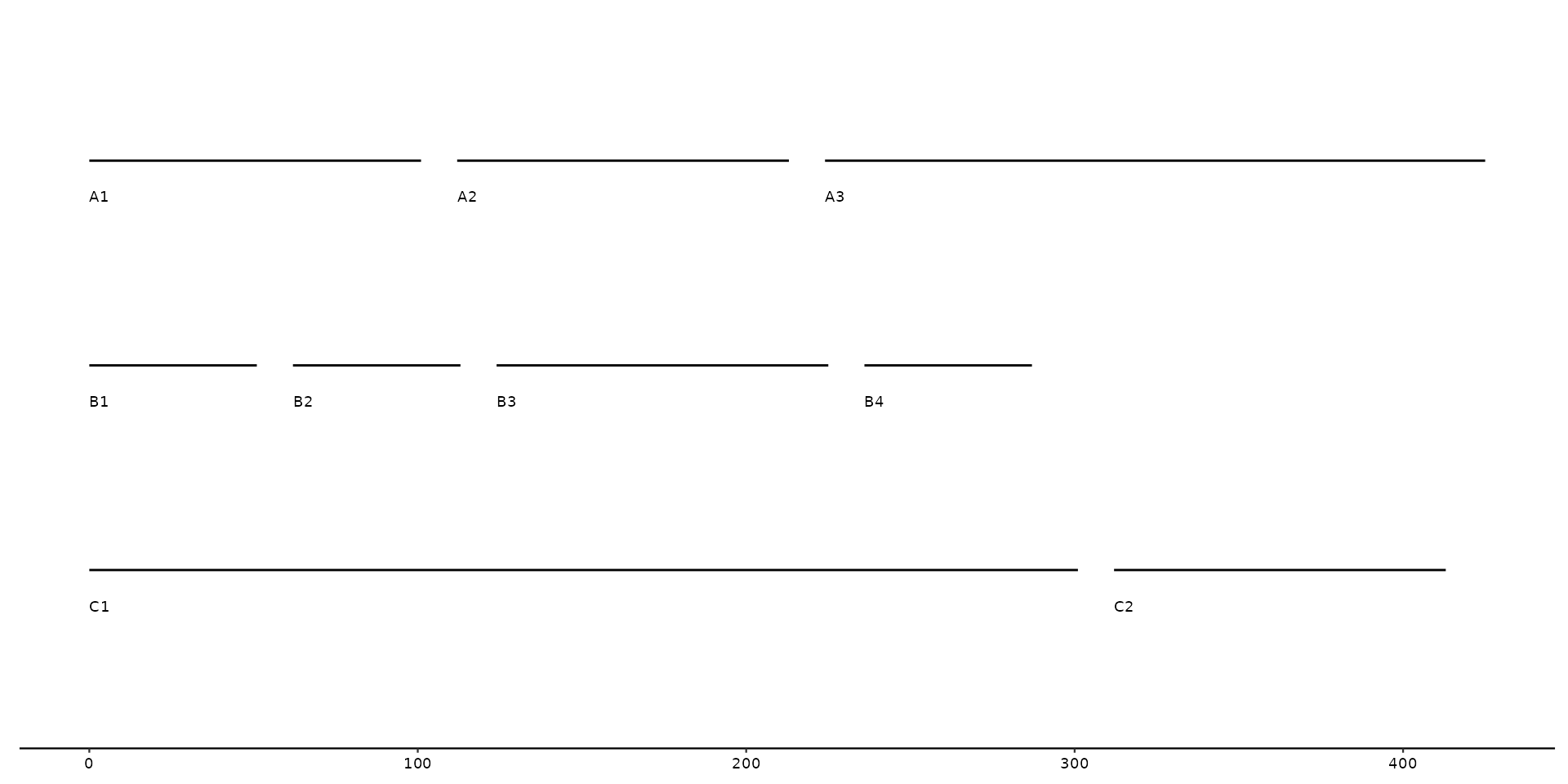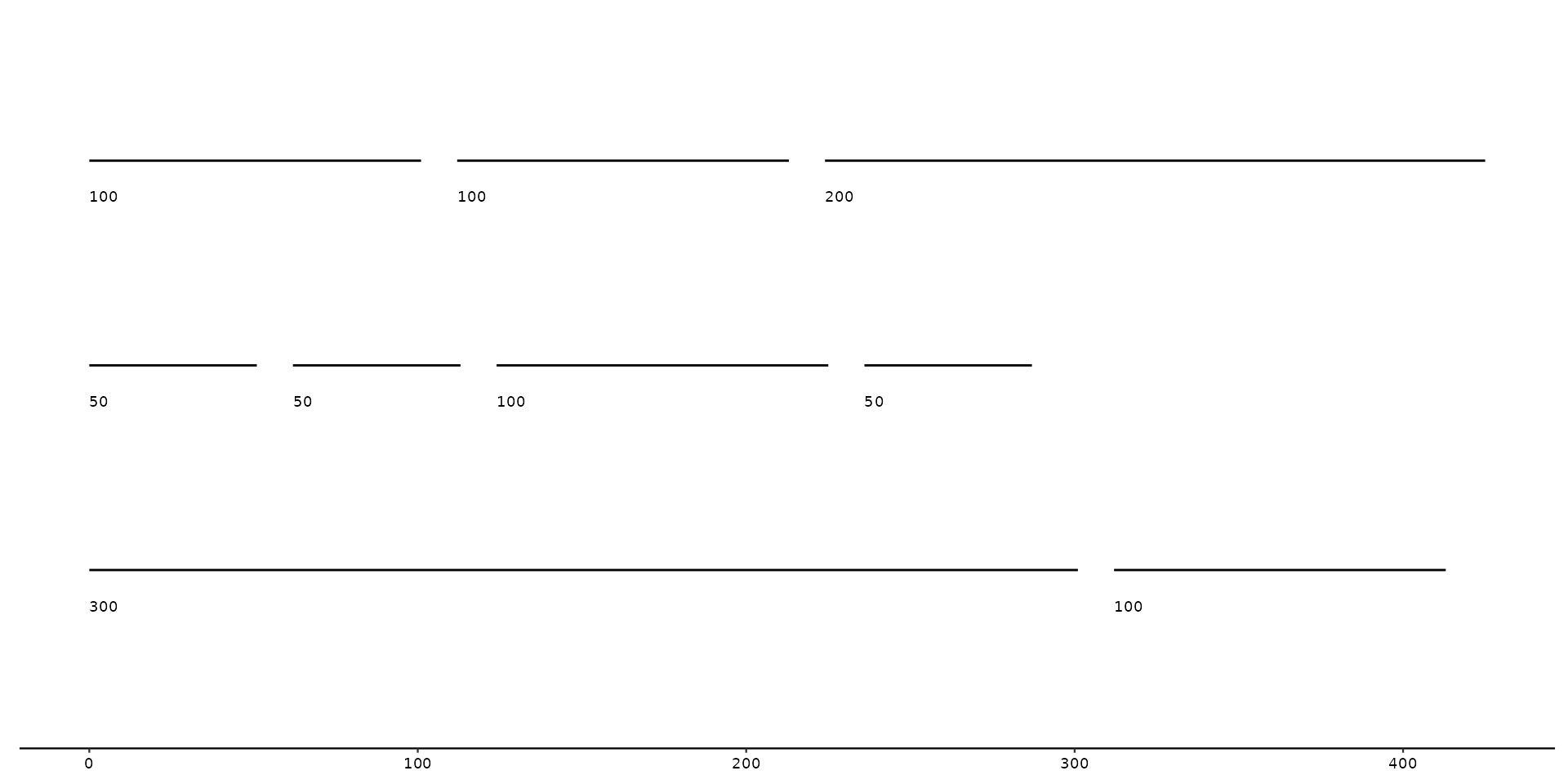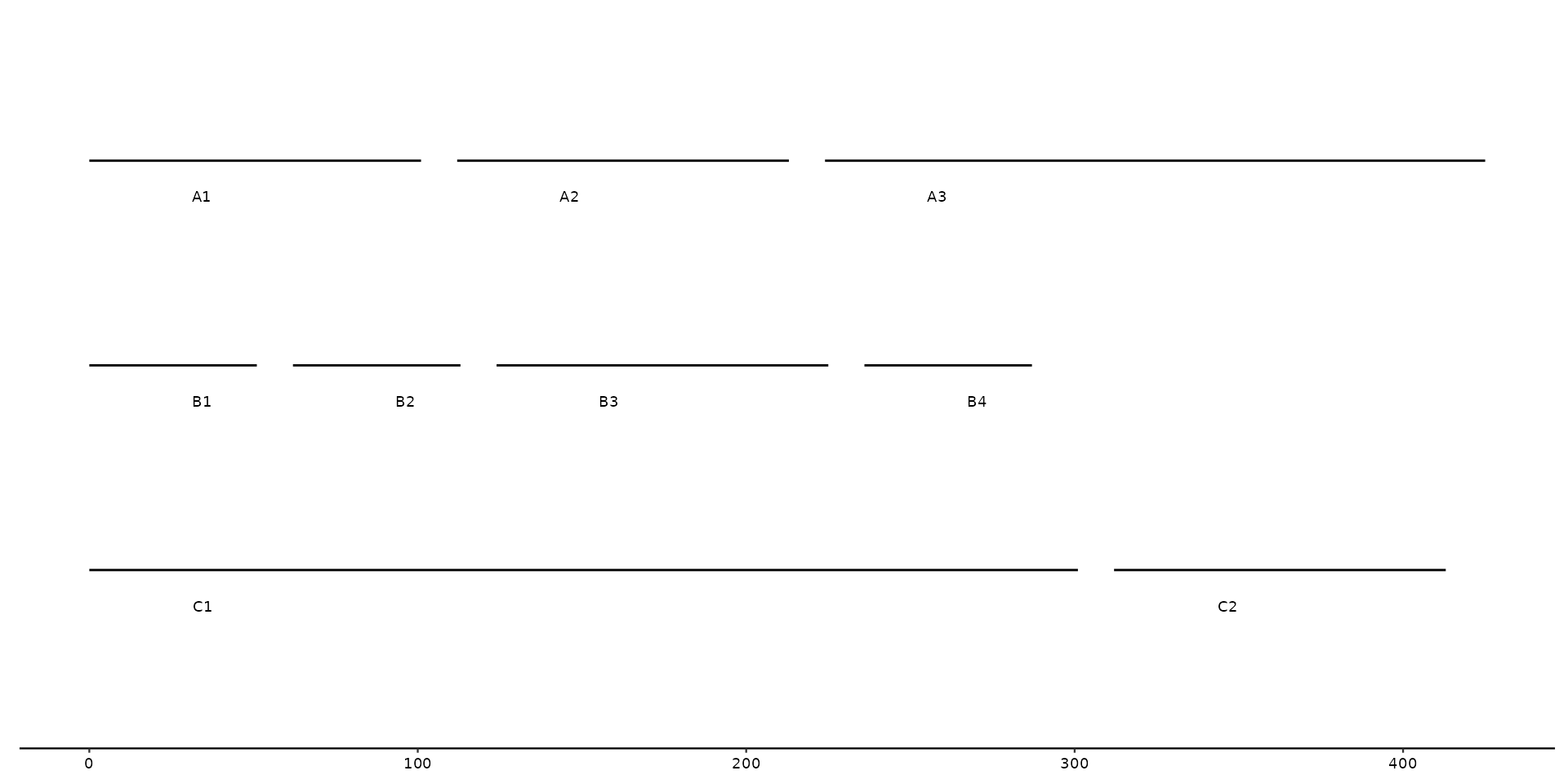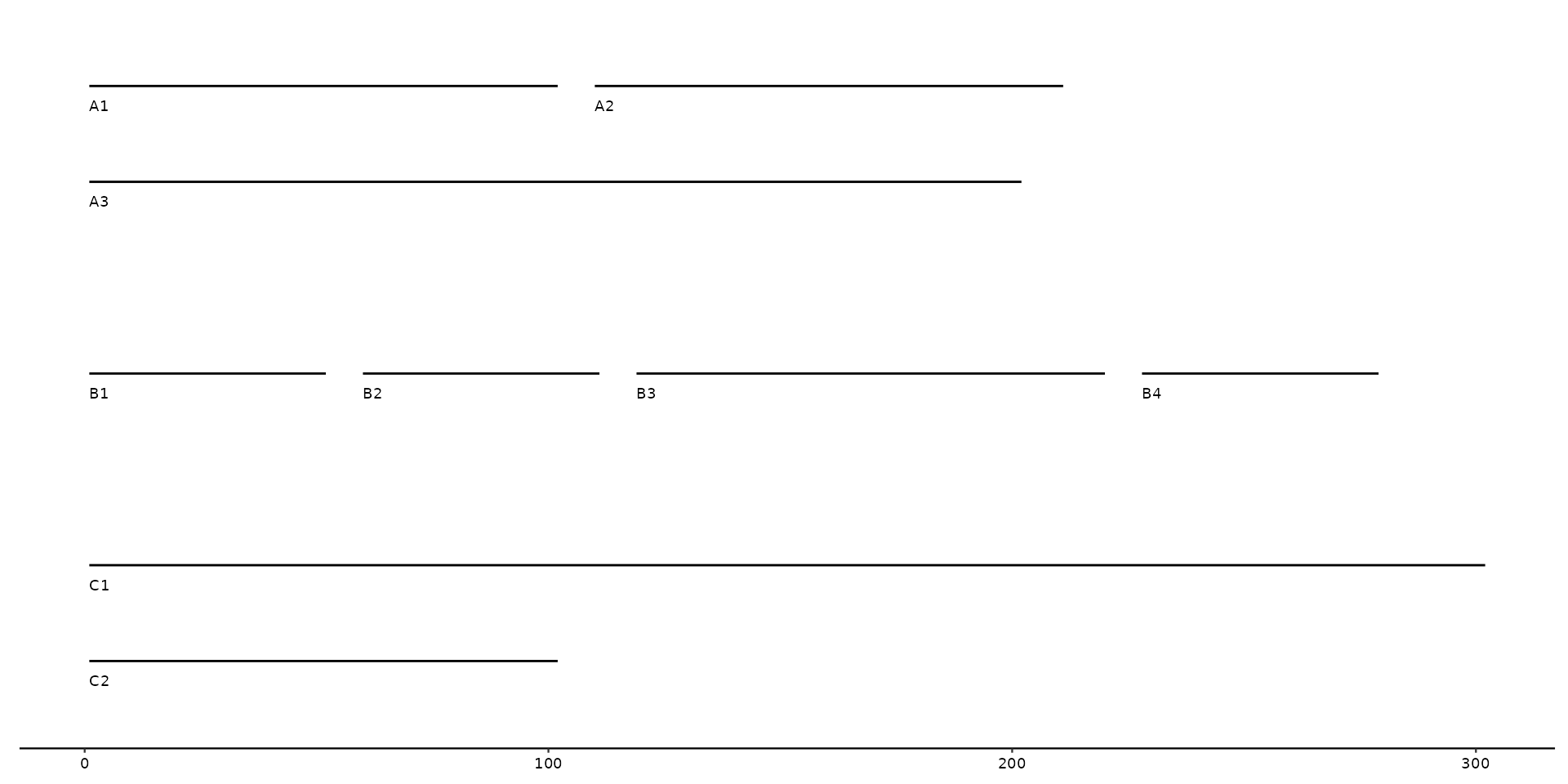This function will put labels at each individual sequence.
By default it will plot the seq_id as label, but users are able to change this manually.
Position of the label/text can be adjusted with the different arguments (e.g. vjust, hjust, angle, etc.)
Usage
geom_seq_label(
mapping = NULL,
data = seqs(),
hjust = 0,
vjust = 1,
nudge_y = -0.15,
size = 2.5,
...
)Arguments
- mapping
Set of aesthetic mappings created by
aes(). If specified andinherit.aes = TRUE(the default), it is combined with the default mapping at the top level of the plot. You must supplymappingif there is no plot mapping.- data
The data to be displayed in this layer. There are three options:
If
NULL, the default, the data is inherited from the plot data as specified in the call toggplot().A
data.frame, or other object, will override the plot data. All objects will be fortified to produce a data frame. Seefortify()for which variables will be created.A
functionwill be called with a single argument, the plot data. The return value must be adata.frame, and will be used as the layer data. Afunctioncan be created from aformula(e.g.~ head(.x, 10)).- hjust
Moves the text horizontally
- vjust
Moves the text vertically
- nudge_y
Moves the text vertically an entire contig/sequence. (e.g.
nudge_y = 1places the text to the contig above)- size
of the label
- ...
Other arguments passed on to
layer()'sparamsargument. These arguments broadly fall into one of 4 categories below. Notably, further arguments to thepositionargument, or aesthetics that are required can not be passed through.... Unknown arguments that are not part of the 4 categories below are ignored.Static aesthetics that are not mapped to a scale, but are at a fixed value and apply to the layer as a whole. For example,
colour = "red"orlinewidth = 3. The geom's documentation has an Aesthetics section that lists the available options. The 'required' aesthetics cannot be passed on to theparams. Please note that while passing unmapped aesthetics as vectors is technically possible, the order and required length is not guaranteed to be parallel to the input data.When constructing a layer using a
stat_*()function, the...argument can be used to pass on parameters to thegeompart of the layer. An example of this isstat_density(geom = "area", outline.type = "both"). The geom's documentation lists which parameters it can accept.Inversely, when constructing a layer using a
geom_*()function, the...argument can be used to pass on parameters to thestatpart of the layer. An example of this isgeom_area(stat = "density", adjust = 0.5). The stat's documentation lists which parameters it can accept.The
key_glyphargument oflayer()may also be passed on through.... This can be one of the functions described as key glyphs, to change the display of the layer in the legend.
Details
This labeling function uses ggplot2::geom_text() under the hood.
Any changes to the aesthetics of the text can be performed in a ggplot2 manner.
Examples
# example data
seqs <- tibble::tibble(
bin_id = c("A", "A", "A", "B", "B", "B", "B", "C", "C"),
seq_id = c("A1", "A2", "A3", "B1", "B2", "B3", "B4", "C1", "C2"),
start = c(0, 100, 200, 0, 50, 150, 250, 0, 400),
end = c(100, 200, 400, 50, 100, 250, 300, 300, 500),
length = c(100, 100, 200, 50, 50, 100, 50, 300, 100)
)
# example plot using geom_seq_label
gggenomes(seqs = seqs) +
geom_seq() +
geom_seq_label()
 # changing default label to `length` column
gggenomes(seqs = seqs) +
geom_seq() +
geom_seq_label(aes(label = length))
# changing default label to `length` column
gggenomes(seqs = seqs) +
geom_seq() +
geom_seq_label(aes(label = length))
 # with horizontal adjustment
gggenomes(seqs = seqs) +
geom_seq() +
geom_seq_label(hjust = -5)
# with horizontal adjustment
gggenomes(seqs = seqs) +
geom_seq() +
geom_seq_label(hjust = -5)
 # with wrapping at 300
gggenomes(seqs = seqs, wrap = 300) +
geom_seq() +
geom_seq_label()
# with wrapping at 300
gggenomes(seqs = seqs, wrap = 300) +
geom_seq() +
geom_seq_label()
